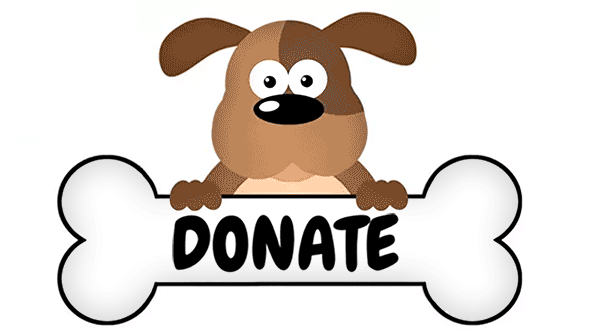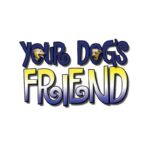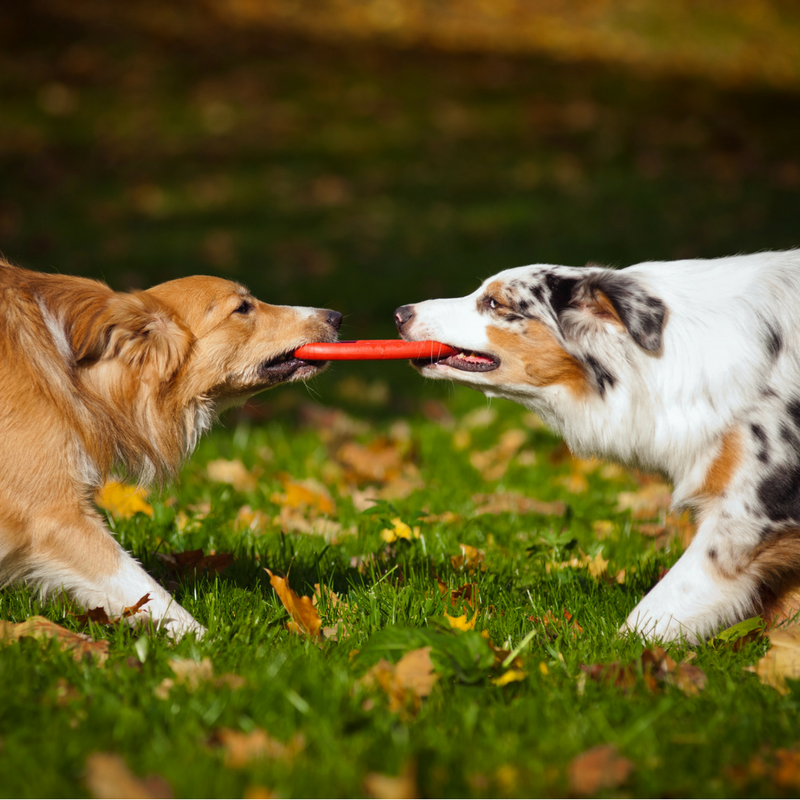
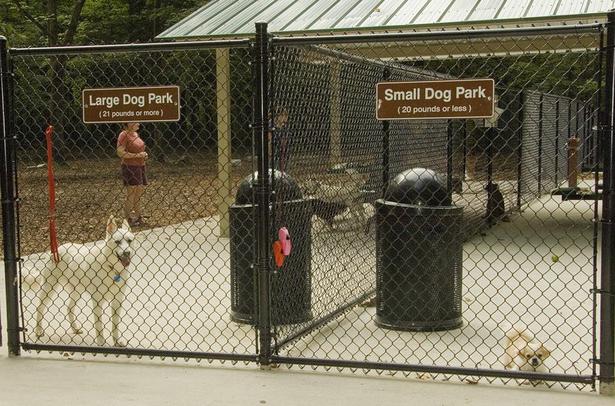 Should I Take My Dog To The Dog Park?
Should I Take My Dog To The Dog Park?
We all envision our dogs romping gleefully with doggy friends at our local dog parks. However, not every dog enjoys being in a dog park, and not every dog park is appropriate for your dog.
Before you take your dog to a dog park, check the dogs and humans at the time that you are most likely to go. Chances are that the same dogs will show up at the same time each week. Watch for anything that might be of concern.
- Are there too many dogs crowded together?
- Do the dogs surround any new dog that arrives?
- Do any of the dogs seem to be bullying other dogs?
- Are the humans paying attention to their dogs, or are they busy talking to each other?
- Are the humans tolerant of each other’s dogs?
- Did someone bring a ball, Frisbee, or other toy that could cause conflict?
- Are there a large number of intact males?
- Is there a separate area for the smaller dogs to play?
- Is the park double gated? Are the gating and fencing secure?
Dogs need exercise, including play, but playtime needs to be a good experience for everyone. Promise yourself that if you have any doubts about whether your dog or others are acting appropriately, the play is getting too rough, or your dog is not having fun, you will LEAVE. Don’t discount the importance of playtime at home with you. You are your dog’s best friend and most sought-after companion.
Dogs At Play
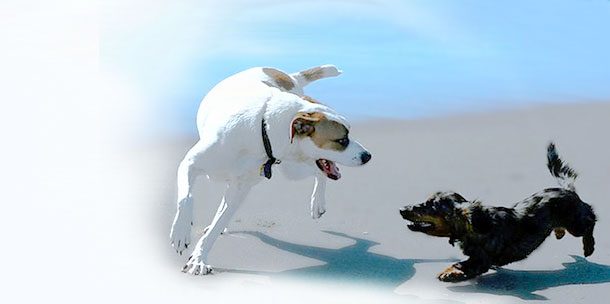
There is a lot about dog play that we humans miss. For one thing, many of us confuse play and aggression. Play can look aggressive, but it’s generally enjoyable to both dogs if you see these signs:
- Play bows (front legs outstretched, hind quarter up)
- Bark or high-pitched growl
- Balance between being on top and being on bottom
- Mouth open when play biting
- Hackles aren’t up (for most breeds)
- Dogs stop and start again
- More side to side than forward movement
- Relaxed, loose bodies
When dogs play off-leash, you should know the difference between polite interactions and signs of trouble. Use the signals below to decide if your dog is safe or if it’s time to stop playing. Play, under normal circumstances, happens in short spurts. If not, you should interrupt the play, so the dogs can calm down, before letting them loose again.
Polite Dog to Dog Interactions
Dogs that are polite and get along with each other:
- Approach other dogs in an arc
- Move slowly and calmly
- Avoid eye contact
- May sniff other dog
- Soft eyes, ears, tails and bodies
NOTE: Dogs walked on a leash are forced to approach each other head on.
Signs of Trouble
These behaviors can be a warning sign of trouble:
- Staring at the other dog
- One dog standing with his head and neck over the other dog’s neck or shoulders in a “t” position
- Walking around the other dog with
- Legs stiff
- Neck arched
- Tail held high
Why Dog Parks May Not Be Appropriate For Your Dog
Play Styles: Different dogs have different play styles (chasing, wrestling, body slamming, biting…) that aren’t compatible. So, growing tension among dogs is inevitable.
Arousal: Dogs at dog parks are in a high state of arousal that can quickly turn to aggression. With so many dogs together in one place and humans who encourage their dogs to play non-stop, there is almost no chance for a dog to calm down.
When aroused, chemicals are released into a dog’s bloodstream that were once useful for dogs’ survival, but which now only serve to amp up our dogs. These don’t dissipate right away, leading to dogs that are on alert even when they’re away from the dog park. When on leash, some of these dog park dogs chafe at being restricted and have trouble staying calm near other dogs.
Bullies: There are some dogs that bully other dogs and others that have never learned polite dog interaction. These dogs approach head-on, stare, or don’t heed another dog’s warning to back off. When your dog enters a dog park, the other dogs surround him, and, sometimes, loose packs of dogs roam the dog park menacing other dogs.
And Bullied: You see dogs that jump on their humans, hide behind them, stay near the fence, cower, or move away when another dog comes near. They are doing everything they can to tell their people that they don’t want to be there. But so many of us think it’s good for them or that they are actually enjoying themselves that we ignore their pleas to leave. You CANNOT make your dog like other dogs by forcing him to be around them, especially in a busy and unpredictable dog park.
Human Inattention & Lack of Understanding: The humans often don’t pay attention, are defensive about their own dogs, and don’t recognize the signals that dogs give to each other and to us. Some will bring toys or balls to the dog park and then get upset when nearby dogs go after them. We have even heard of people who kicked, hit, or picked up and threw another person’s dog because they deemed that dog’s behavior to be threatening (even though it was normal dog behavior that didn’t require intervention).
Health: No one is checking on whether the dogs at dog parks are healthy or have had their vaccinations. And when aroused play becomes aggressive, dogs have been bitten, badly injured, or have died from injuries suffered at dog parks.
Predatory Drift: Some dogs are more predatory than others. They were bred to chase and kill other animals. At some point, while chasing a furry looking dog that may resemble a rabbit or squirrel to them, their animal instinct may kick in. The dog may stalk, pick up, and shake another dog as if it were prey.
Long-Term Effects: If something happens at the dog park – your dog is scared, bitten, or a fight breaks out nearby – your dog’s behavior can be affected from then on. Even one bad experience can have long-term effects on your dog.
We see so many dogs that become reactive after going to dog parks – either because they are now afraid of other dogs and act aggressively to keep them away or because it’s difficult for them to stay calm when they see another dog.
What You Can Do Instead
Arrange play dates with dogs that you know are compatible and healthy. Keep in mind, though, that even best friends can become overly aroused, leading to aggression in an instant. Breaking up play every few minutes helps keep the arousal level low and teaches the dogs that they don’t always have to be manic in the company of other dogs. Go get your dog, and give him a gentle massage while talking softly. If your dog tries to leave or wriggles, be patient and stay calm. Then, let the dogs loose to play again. Remember that until your dog learns that your intervention is a pleasant experience and only temporary, you can’t compete with dogs at play.
If exercise is your goal, there are a lot of ways for you to exercise your dog – blowing bubbles for your dog to pop, moving around a Chase ‘N Pull (a sheepskin on a flexible rod that your dog can chase), teaching your dog to “find it” (look for hidden treats), bouncing a ball or using a Chuck-It to throw it a distance, or “casting” a Flirt Pole, a dog exercise toy with a fleece toss lure (kind of like a fishing pole).
Most of us don’t realize that when our dogs use their brains, it tires them as much as physical exercise and is just as important. Practice training cues, or teach your dog tricks. Use interactive toys that require a dog to pull, push, drop, roll, or tug to get kibble to fall out. Your dog will try to figure out why kibble fell out one time and not the next. Puzzle toys can be even more challenging. The dog has to lift or slide multiple pieces at different levels to get to the treats hidden inside.
There is no limit to the ways you can provide physical exercise and mental stimulation for your dog without risking your dog’s health and well-being at a dog park. If they could, most dogs would thank you.
Resources
If you do go to a quiet dog park with well-behaved dogs and humans
Off-Leash Dog Play: a guide to safety and fun, Robin Bennett
Dog Park Assistant app, Sue Sternberg https://itunes.apple.com/us/app/dog-park-assistant/id566034379?mt=8
Contact Your Dog’s Friend at [email protected] or (301)983-5913 for advice and referrals or check out our list of recommended trainers and behaviorists.
Still Need Help?
Contact Your Dog’s Friend at [email protected] or (301)983-5913 for advice and referrals or check out our list of recommended trainers and behaviorists.
Your Dog’s Friend is a nonprofit 501(c)(3) organization working to improve dogs’ lives, reduce problem behaviors, and keep dogs out of shelters, by educating and supporting their humans.
This material is not intended to be a substitute for professional help when dealing with dogs with intense or potentially dangerous behavior issues. Consult a positive reinforcement trainer or veterinary behaviorist for professional assessment, guidance, and support.
